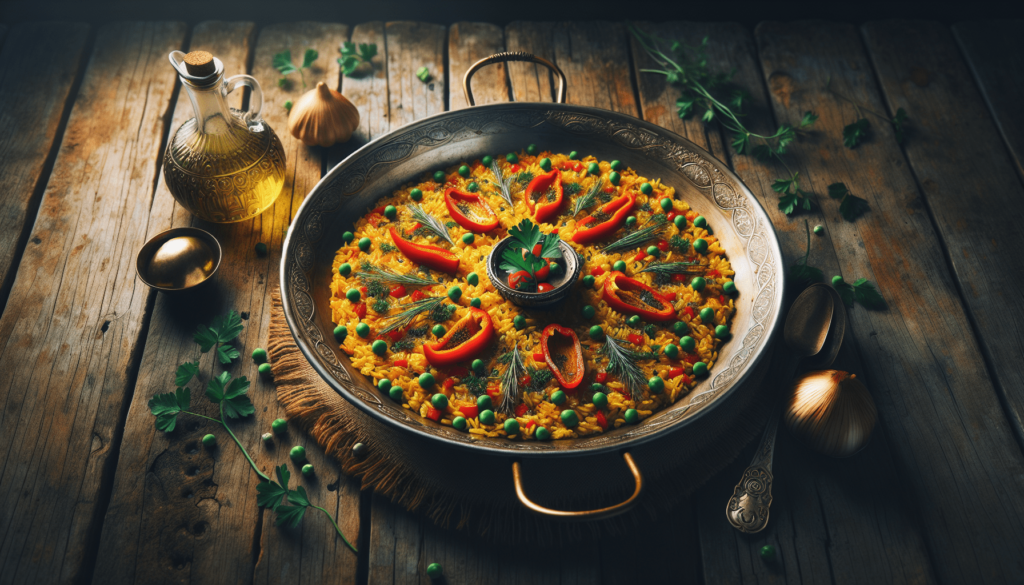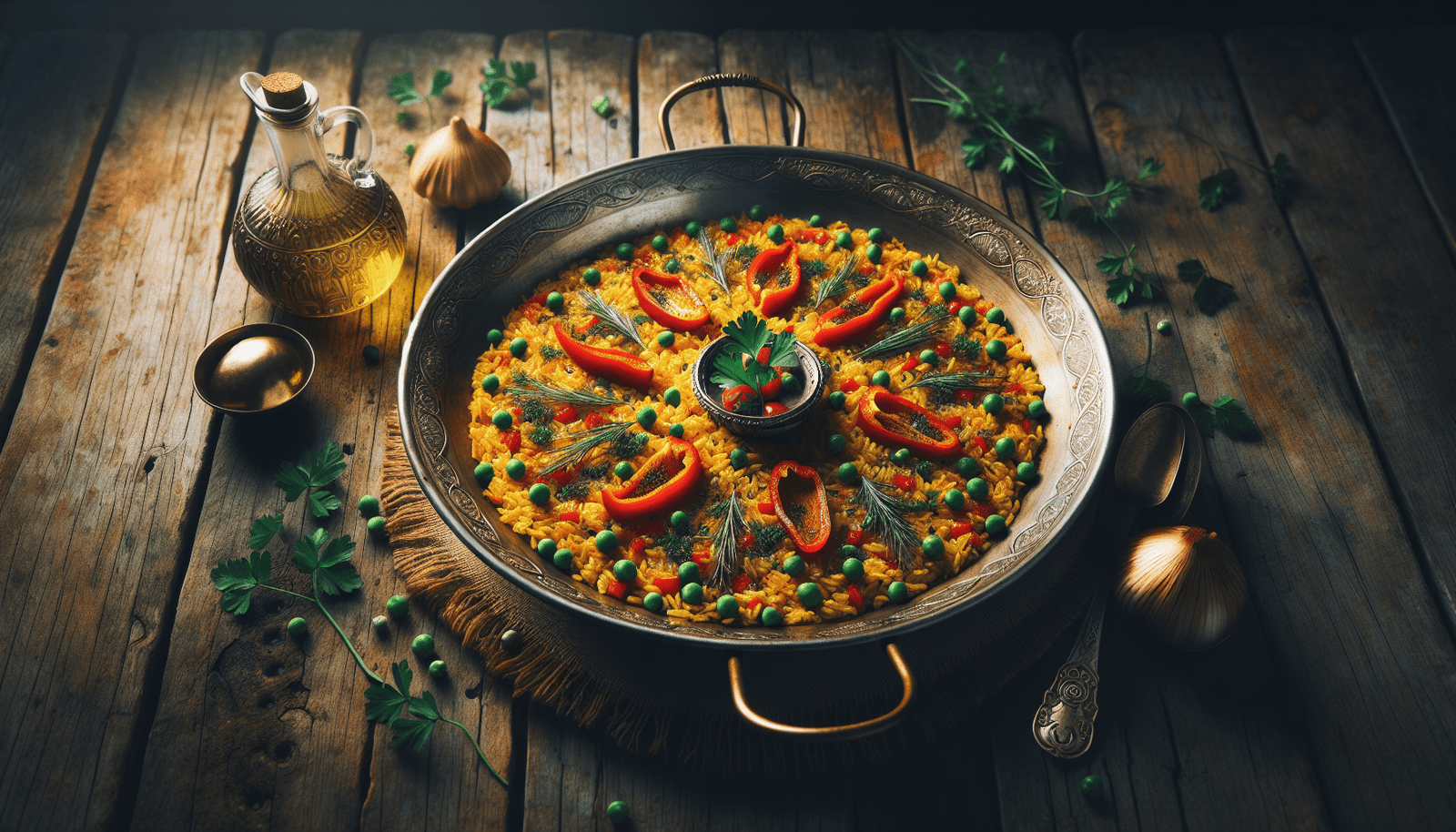Have you ever wondered what makes Spanish rice truly authentic? Spanish rice, known for its rich flavors and vibrant color, is a beloved dish that captivates palates across the globe. It combines a variety of ingredients that each bring something unique to the table. While many variations exist, the essence of authentic Spanish rice remains consistent, rooted in tradition and a love for bold, fresh tastes.

Understanding Spanish Rice
What Is Spanish Rice?
Spanish rice, also known as arroz rojo, is a traditional dish from Spain. It is characterized by its red hue, typically achieved through tomatoes or tomato sauce. Unlike Mexican rice, which is often confused with Spanish rice, this dish is less spicy and focuses more on aromatic spices and fresh ingredients to build its depth of flavor.
The Key Components of Authentic Spanish Rice
Understanding the key components of Spanish rice helps you appreciate the nuances that elevate the dish:
- Rice: Short or medium-grain rice is preferred. It absorbs flavors well and results in a plump, tender texture.
- Tomatoes: Fresh tomatoes or a good-quality tomato sauce provide the base color and flavor.
- Broth: Chicken or vegetable broth enriches the dish with a savory, hearty taste.
- Onions and Garlic: These aromatic vegetables add depth and a satisfying aroma.
- Bell Peppers: Often included for a touch of sweetness and crunch.
- Safron or Turmeric: While optional, these spices infuse the rice with color and a distinct flavor profile.
A Brief History of Spanish Rice
Spanish rice has its roots in the culinary traditions of Spain but was significantly influenced by the introduction of rice from Asia through trade routes. It evolved by incorporating local ingredients, eventually becoming a staple in Spanish and Latin American cuisines.
Preparing Your Ingredients
A successful dish relies heavily on the quality of its ingredients. Before you begin cooking, gathering and prepping everything ensures a smooth process.
Choosing the Right Rice
The choice of rice can impact the final dish significantly. Short or medium-grain rice varieties like Arborio or Bomba are ideal, as they absorb liquid and flavors well without becoming mushy. Avoid long-grain rice, as it may not achieve the desired consistency.
The Importance of Fresh Produce
Using fresh tomatoes and bell peppers enhances the flavor and texture of your dish. When possible, opt for vine-ripened tomatoes and firm, crisp bell peppers. Fresh onions and garlic also make a notable difference, providing a robust base for the dish.
Stocking Up on Essential Spices
While saffron is traditionally used, it can be a bit pricey. Turmeric is a viable alternative that offers a similar color with a slightly different flavor. Ground cumin, smoked paprika, and dried oregano are other staples that add complexity and warmth to the rice.
The Role of Broth
The broth you select significantly impacts the taste of your rice. Homemade chicken or vegetable broth is preferable, as it infuses the dish with a depth of flavor that commercial broth may not offer. However, high-quality store-bought broth can be a convenient alternative.
Cooking Instructions
Now it’s time to bring your Spanish rice to life. Follow these steps to craft a dish bursting with flavor and authenticity.
Step 1: Prepare Your Vegetables
- Dice the Onions and Bell Peppers: Uniform pieces ensure even cooking and distribution of flavors.
- Mince the Garlic: This releases its oils and enhances the aroma of your dish.
- Chop the Tomatoes: Alternatively, you can blend them into a puree for a smoother texture.
Step 2: Sauté the Aromatics
Heat a generous splash of olive oil in a large pan over medium heat. Add the onions and sauté until they become translucent. Introduce the garlic and continue cooking for another minute, ensuring it doesn’t burn, as burnt garlic can introduce bitterness to the dish.
Step 3: Toast the Rice
Stir in the rice and toast it lightly. This step enhances the nutty flavor of the rice and prevents it from becoming mushy. Make sure each grain is coated with oil and slightly golden.
Step 4: Incorporate the Tomatoes and Peppers
Add the chopped or pureed tomatoes and diced bell peppers to the pan. Stir well to combine and allow the mixture to cook down, releasing its juices and creating a rich base for the rice.
Step 5: Season To Perfection
Add your spices – saffron or turmeric, smoked paprika, cumin, and oregano. Season with salt and black pepper to taste. If using saffron, steep it in a little warm broth before adding for a more intense color and flavor.
Step 6: Simmer With Broth
Pour in the chicken or vegetable broth, stirring to combine. The broth should cover the rice by about an inch. Bring the mixture to a boil, then reduce to a gentle simmer. Cover the pan with a tight-fitting lid and cook for 15-20 minutes, or until the rice is tender and has absorbed most of the liquid. Avoid removing the lid frequently, as this can disrupt the cooking process.
Step 7: Rest the Rice
Once the rice is cooked, remove it from heat and let it sit, covered, for 5-10 minutes. This resting period allows the rice to finish absorbing any remaining liquid and ensures a fluffy texture.
Step 8: Fluff and Serve
Using a fork, gently fluff the rice to loosen the grains and mix in the bell peppers and tomatoes evenly. This step ensures a light, airy texture for your finished dish. Serve warm, garnished with chopped parsley or cilantro for a fresh touch.
Tips for Perfecting Your Spanish Rice
Even with a foolproof recipe, a few tricks can help elevate your Spanish rice to new heights.
The Art of Timing
Timing is crucial in rice cooking. Starting with a hot pan and gradually reducing the heat helps achieve a perfect texture. Patience is key, and observing visual cues (like the liquid’s absorption) offers guidance for the appropriate cooking time.
Balancing Flavors
Spanish rice thrives on a balance of flavors. Tasting as you go is essential; make adjustments to spices, salt, and acid (such as a splash of lime juice) based on your preferences. Everyone’s palate is unique, so feel free to tailor the recipe to suit yours.
Dealing with Common Pitfalls
- Rice Too Mushy: Check the quantity of liquid. Use less broth or adjust cooking time next attempt.
- Rice Undercooked: If the rice is undercooked after simmering, add a little more broth, cover, and cook for a few additional minutes.
- Flavors Not Complementary: If the spices aren’t well-balanced, make a note and tweak the proportions next time.

Serving Suggestions
Spanish rice is a versatile dish, perfect as a standalone or accompaniment.
Pairing with Proteins
Serve Spanish rice alongside grilled chicken, shrimp, or beef for a complete meal. The rice’s robust flavor complements a variety of proteins, allowing them to shine without overpowering them.
Vegetarian Options
For a vegetarian feast, pair Spanish rice with a medley of roasted vegetables like zucchini, eggplant, and mushrooms. A fresh green salad with a simple vinaigrette also makes a refreshing side dish.
Adding a Herbal Finish
Sprinkle your rice with fresh herbs such as parsley, cilantro, or basil just before serving. This final touch adds color and a burst of freshness that enhances the dish’s overall appeal.
The Joy of Homemade Spanish Rice
Mastering the art of cooking authentic Spanish rice offers not just a delicious serving but also a fulfilling culinary journey. As you continue to make this dish, you’ll find there’s room for creativity and personalization. Embrace the process, enjoy the flavors, and share your creation with loved ones, creating memories around a simple dish that speaks volumes.
In conclusion, authentic Spanish rice is about more than just following a recipe. It’s about understanding the elements that lead to its incredible taste and practicing techniques that release its full potential. With practice, you’ll be crafting not just a meal, but an experience that showcases the rich flavors and vibrant culture of Spain, inviting your taste buds into a world of culinary heritage.
Some of the links on this site are affiliate links, which means I may earn a small commission if you click on them and make a purchase, at no additional cost to you. As an Amazon Associate, I earn from qualifying purchases.



